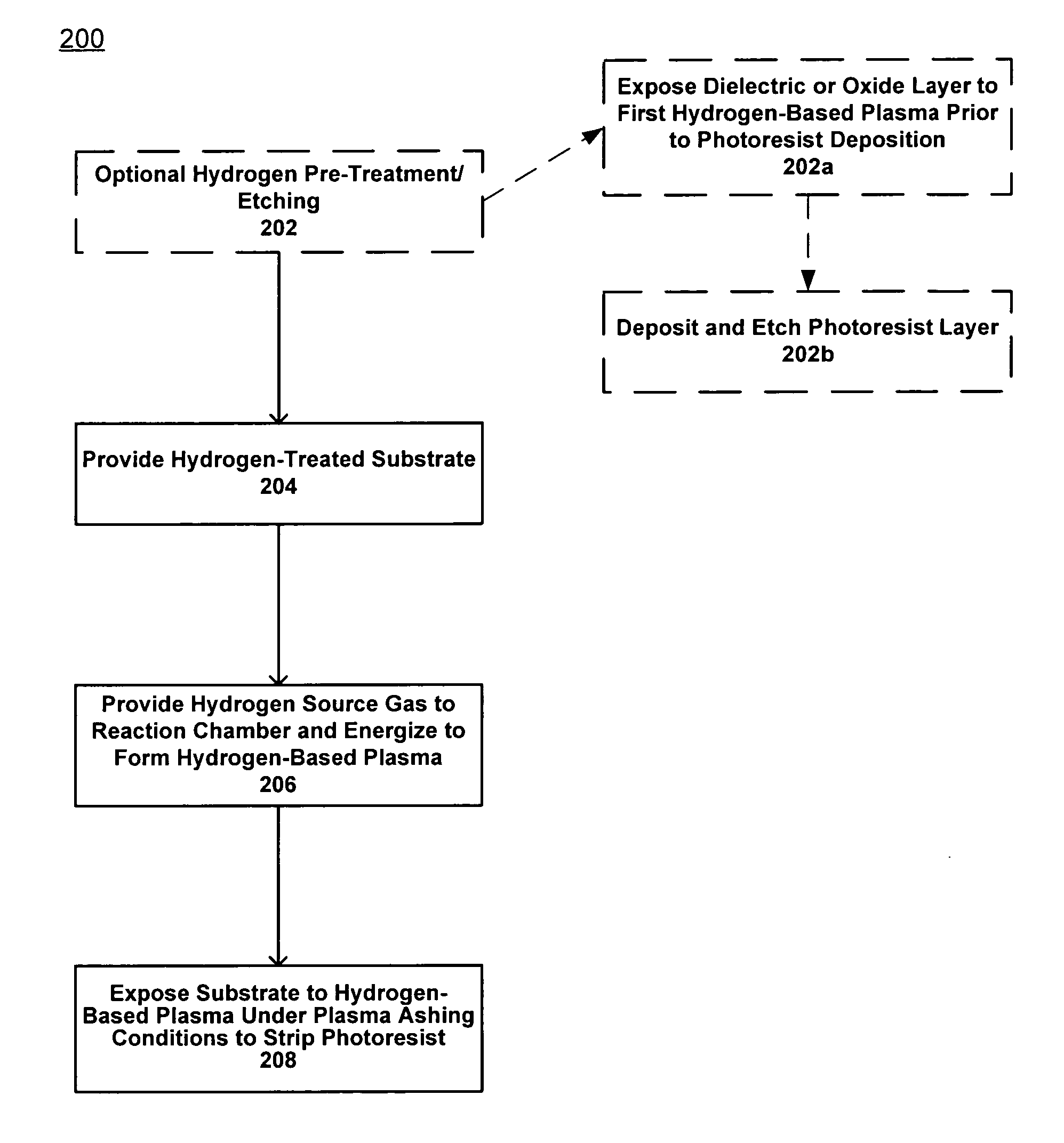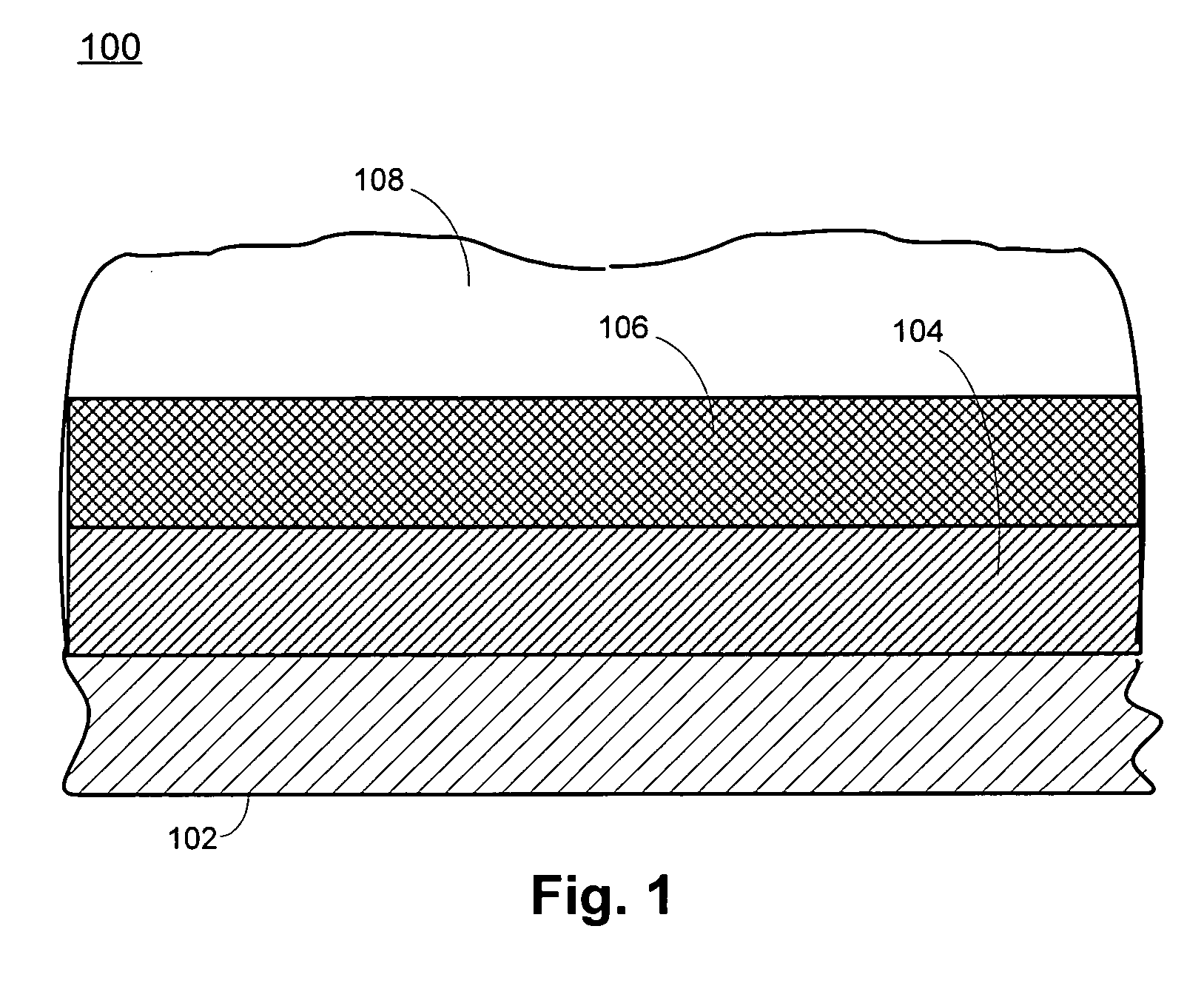Hydrogen treatment to improve photoresist adhesion and rework consistency
a technology of hydrolysis and photoresist, applied in photomechanical treatment, instruments, electrical equipment, etc., can solve the problems of affecting device performance, yield and reliability of the final integrated circuit, and oxygen-containing plasmas readily damage certain materials used in advanced integrated circuit manufacturing, and direct impact on device performance, etc., to achieve selective removal of photoresist and/or organic overlayers, the effect of degrading the adhesion properties of the underlying substrate layer
- Summary
- Abstract
- Description
- Claims
- Application Information
AI Technical Summary
Benefits of technology
Problems solved by technology
Method used
Image
Examples
Embodiment Construction
[0016] In accordance with the present invention, it has been unexpectedly found that the surface chemistry and adhesion properties of hydrogen treated dielectric and / or oxide substrate layers can be maintained following photoresist ashing and / or rework in an oxygen free environment. More particularly, it has been found that hydrogen treated dielectric and oxide substrate surfaces retain good adhesion, reflectivity index, and wetting angle following hydrogen-based stripping of the photoresist layer, e.g., ashing and / or rework. Further, it has been found that good critical dimension (CD) of the etched substrate may be maintained, as well as the dielectric constant of the dielectric layer.
[0017] In one aspect, process for selectively removing photoresist, organic overlayers, and / or polymers / residues from a substrate without altering the surface chemistry and adhesion properties of the underlying substrate layers is provided. Generally, the process includes pretreating the substrate wi...
PUM
 Login to View More
Login to View More Abstract
Description
Claims
Application Information
 Login to View More
Login to View More - R&D
- Intellectual Property
- Life Sciences
- Materials
- Tech Scout
- Unparalleled Data Quality
- Higher Quality Content
- 60% Fewer Hallucinations
Browse by: Latest US Patents, China's latest patents, Technical Efficacy Thesaurus, Application Domain, Technology Topic, Popular Technical Reports.
© 2025 PatSnap. All rights reserved.Legal|Privacy policy|Modern Slavery Act Transparency Statement|Sitemap|About US| Contact US: help@patsnap.com



